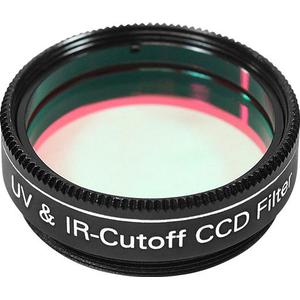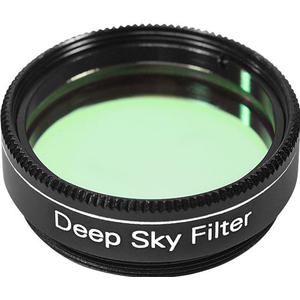Equipped with the new high-sensitive SONY IMX585 Exmor CMOS colour sensor, this astronomy camera delivers amazing image results with extremely short exposure times even with basic telescope equipment. In addition, this ultra-modern camera can also be used as an autoguider, e.g. to actively track the main imaging device with an SLR or CCD astro camera. An all-round camera that delivers super-sharp and high-resolution planetary images. The high 4K resolution of 3840x2160 pixels guarantees the best possible image result.
The included Explore Capture professional software offers not only the necessary basic functions for image and video capture, but also many helpful special functions for image post-processing and for setting up the guider. Functions such as live image display, exposure settings, white balance, dark image capture, stacking, timelapse recording and much more can be configured individually. Especially the very sophisticated software makes it really easy for you to get started in astrophotography. With the automatic settings you can produce absolutely presentable results without a lot of prior knowledge. And when you are ready, simply switch off the automatic settings and gradually venture into the individual professional settings.
BSI, back-illuminated CMOS structure:
One benefit of the back-illuminated CMOS structure is improved sensitivity. In a typical front-illuminated sensor, photons from the target entering the photosensitive layer of the sensor must first pass through the metal wiring that is embedded just above the photosensitive layer. The wiring structure reflects some of the photons and reduces the efficiency of the sensor.
In the back- illuminated sensor the light is allowed to enter the photosensitive surface from the reverse side. In this case the sensor’s embedded wiring structure is below the photosensitive layer. As a result, more incoming photons strike the photosensitive layer and more electrons are generated and captured in the pixel well. This ratio of photon to electron production is called quantum efficiency. The higher the quantum efficiency the more efficient the sensor is at converting photons to electrons and hence the more sensitive the sensor is to capturing an image of something dim.
Global Shutter:
Unlike the rolling shutter technology used in most CMOS cameras, a global shutter guarantees that the exposure time for the whole image area is uniform, beginning and ending at exactly the same time. This type of shutter is ideal for high precision applications. For high speed moving object and the atmospheric agitation the global shutter can generate undisborted imaging and realizes high picture quality.
Colour or mono? Black and white cameras have the advantage of higher sensitivity and resolution than colour cameras. However, more effort is required to obtain a colour image. You also need colour filters and a filter wheel


